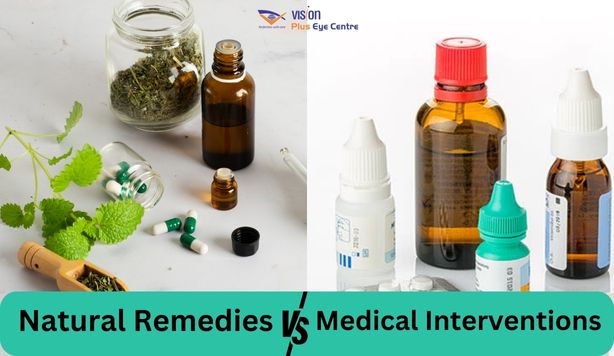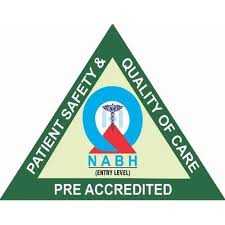
Dry eye syndrome is a common ocular condition that affects millions of people worldwide. It occurs when the eyes don’t produce enough quality tears to maintain proper lubrication, leading to discomfort, irritation, and potential damage to the cornea. While dry eye can be a persistent and bothersome condition, the good news is that various treatment options are available. When it comes to managing dry eye, individuals often face a choice between natural remedies and medical interventions. In this blog, we will explore both approaches, helping you make an informed decision about the right dry eye treatment for your needs.
Understanding Dry Eye Causes and Symptoms
Before delving into treatment options, let’s briefly review the causes and symptoms of dry eye syndrome:
Causes:
- Aging: Dry eye becomes more common as individuals get older.
- Environmental Factors: Factors like low humidity, smoke, wind, and air conditioning can contribute to dry eye.
- Medical Conditions: Certain systemic conditions, such as Sjögren’s syndrome, rheumatoid arthritis, and diabetes, can increase the risk of dry eye.
- Medications: Some medications, including antihistamines, decongestants, and antidepressants, may reduce tear production.
- Prolonged Screen Time: Extensive use of digital devices can lead to reduced blink rates and increased evaporation of tears.
Common Symptoms:
- Dryness: A sensation of dryness or grittiness in the eyes.
- Redness: Eyes may appear red or bloodshot.
- Burning: A burning or stinging sensation.
- Blurry Vision: Vision may become temporarily blurred.
- Tearing: Paradoxically, some individuals experience excessive tearing as the eyes try to compensate for dryness.
- Light Sensitivity: Increased sensitivity to light, known as photophobia.
Now that we understand dry eye better, let’s explore the two main approaches to treatment: natural remedies and medical interventions.
Natural Remedies for Dry Eye
Natural remedies for dry eye syndrome are often the first choice for individuals seeking relief, especially if their symptoms are mild to moderate. These remedies are generally considered safe, and they can be easily incorporated into daily routines. Here are some popular natural remedies for managing dry eye:
- Warm Compresses: Applying a warm compress to closed eyes can help stimulate oil gland secretions and improve tear quality.
- Hydration: Staying well-hydrated by drinking sufficient water can help maintain overall eye moisture.
- Omega-3 Fatty Acids: Omega-3 supplements, often found in fish oil, may help improve tear composition and reduce inflammation.
- Blink Exercises: Taking breaks from digital screens and performing regular blink exercises can promote even distribution of tears.
- Humidifiers: Using a humidifier in your environment can increase indoor humidity, reducing the risk of evaporation-related dryness.
- Dietary Changes: Incorporating foods rich in vitamins A, C, and E, as well as zinc, can support overall eye health.
- Eye Protection: Wearing wraparound sunglasses or protective eyewear can shield the eyes from wind and debris.
While natural remedies can provide relief, they may not be sufficient for everyone, especially those with severe dry eye or underlying medical conditions.
Medical Interventions for Dry Eye
Medical interventions for dry eye syndrome are typically recommended when natural remedies alone do not provide adequate relief. These interventions are prescribed and overseen by eye care professionals, and they may include:
- Prescription Eye Drops: Eye drops with anti-inflammatory properties, such as corticosteroids or cyclosporine, may be prescribed to reduce inflammation and improve tear production.
- Artificial Tears: Lubricating eye drops, gels, or ointments can provide immediate relief by adding moisture to the eyes.
- Punctal Plugs: Tiny plugs can be inserted into the tear ducts to block drainage, allowing tears to remain on the surface of the eye longer.
- LipiFlow: A thermal pulsation system that uses heat and gentle pressure to unclog and stimulate the meibomian glands responsible for producing the oily layer of tears.
- Intense Pulsed Light (IPL) Therapy: A non-invasive procedure that uses light energy to stimulate the glands and reduce inflammation around the eyes.
- Autologous Serum Drops: In severe cases, a patient’s own blood serum can be processed into eye drops to provide a customized tear substitute.
- Scleral Lenses: Specially designed contact lenses that vault over the cornea and create a reservoir for artificial tears, providing continuous moisture to the eye.
- TearCare: A newer procedure that applies localized heat therapy to the eyelids to help improve oil gland function.
Choosing the Right Treatment Approach
The choice between natural remedies and medical interventions for dry eye should be based on several factors:
- Severity of Symptoms: The severity of your dry eye symptoms plays a significant role in determining the most appropriate treatment. Mild cases may respond well to natural remedies, while moderate to severe cases often require medical interventions.
- Underlying Conditions: If dry eye is a symptom of an underlying medical condition, addressing that condition may be necessary to effectively manage dry eye.
- Individual Response: Everyone’s eyes are unique, and what works for one person may not work for another. It may take some trial and error to find the most effective treatment for your specific case.
- Consultation with an Eye Specialist: It’s essential to consult with an eye care specialist, such as an optometrist or ophthalmologist, to assess your condition, determine its underlying causes, and recommend the most appropriate treatment plan.
- Lifestyle Considerations: Lifestyle factors, such as your daily activities, work environment, and access to medical care, can also influence your treatment choice.
- Long-Term Management: Some individuals may require a combination of natural remedies and medical interventions for long-term dry eye management.
Ultimately, the key to successful dry eye treatment lies in working closely with your eye care professional, maintaining open communication about your symptoms and treatment response, and being willing to adapt your approach as needed.
Conclusion: Finding Relief for Dry Eye
Dry eye syndrome is a common condition that can significantly impact daily life. Fortunately, a wide range of treatment options is available, ranging from natural remedies to medical interventions. The right approach for you will depend on the severity of your symptoms, the underlying causes of your dry eye, and your individual response to treatment. Whether you choose to start with natural remedies or opt for medical interventions, the important thing is to seek guidance from an eye care specialist who can help you navigate the path to relief and improved eye health. By taking proactive steps to address dry eye, you can regain comfort, clarity, and a better quality of life.
Discover the ideal dry eye treatment at Vision Plus Eye Center. Explore the choice between natural remedies and medical interventions for effective relief. Your eye health matters.
Call Now at 0120-2481481, 2480480 +91 88003 13134 or email us at info@visionplus.net.in.
Book an Online Appointment: https://visionplus.net.in/contact/

